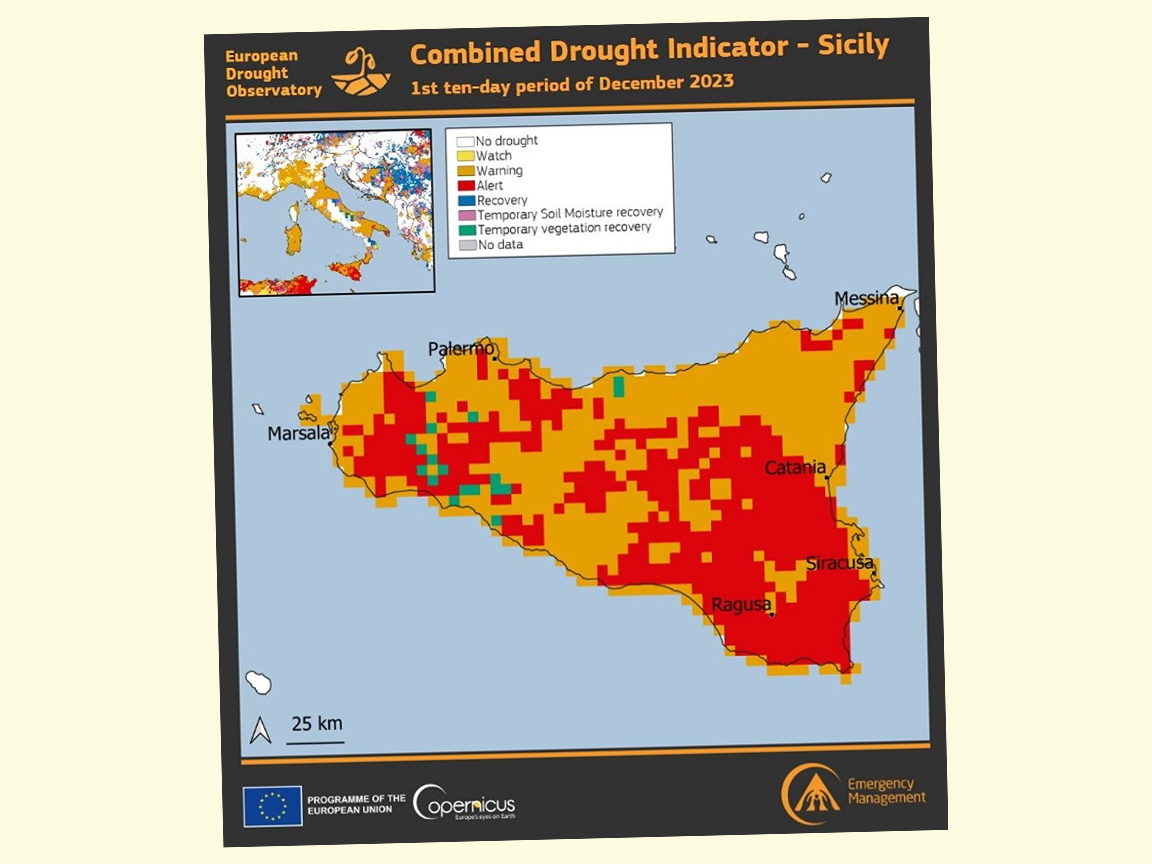
Climate change key driver of extreme drought in Sicily and Sardinia

By the Climate Centre
Blistering heat linked to climate change is turning periods of very low rainfall like the one experienced since last summer in the Italian islands of Sicily and Sardinia into devastating droughts, World Weather Attribution scientists concluded in a new study released yesterday.
“Persistent heat that evaporates water from soils, plants and reservoirs is driving the rise in drought risk,” the team found, with climate change boosting the likelihood of crippling droughts in the two islands by 50 per cent.
The Italian authorities declared a state of emergency in Sicily in May and in Sardinia in July amid what has been described as the worst drought in 20 years; both are important centres of agriculture and tourism.
At the end of July, Agence France-Presse reported that “crushing drought in Sicily has withered fields of grain, deprived livestock of pasture land and fanned a spate of wildfires, causing damage already estimated at 2.7 billion euros this year.”
“There’s no hope, because it hasn’t rained since May of last year,” the agency quoted Salvatore Michele Amico as saying, a farmer near the town of San Cataldo in the dry interior. “All the planted fields have been lost: there is no wheat, no barley, no oats.”
WWA’s Friederike Otto, Senior Lecturer at London’s Imperial College, said yesterday: “Climate change is making Sardinia and Sicily, hotter, drier and less fertile.
“Crops used to produce Italy’s iconic cuisine, like wheat and olives, are dying in ferocious heat well above 40°C. To stop droughts from getting even worse, we need to stop burning fossil fuels.”
‘There is no wheat, no barley, no oats’
If the world reaches 2°C of warming, which could happen as early as the 2050s, droughts in Sardinia and Sicily will become even more intense and frequent, according to the study, which also highlights how ageing water infrastructure is worsening water shortages.
The Climate Centre’s Maja Vahlberg adds: “Reservoirs have run dry. Towns have endured months of water rationing. Lake Pergusa has disappeared. Crops have wilted in parched soils …
“Limiting water loss from ageing, leaky pipes and increasing storage capacity in Sardinia and Sicily will help reduce similar water shortages in low-rainfall years.”
The Italian Red Cross has been working with the Dipartimento della Protezione Civile to limit the impacts of the drought, including through local coordination in the north-east Sicilian port of Messina and distributing drinking water in the central municipality of Caltanissetta.
With drought also affecting Spain, media reports this week said officials from the MED9 countries – France, Greece, Cyprus, Italy, Croatia, Portugal, Malta, Spain and Slovenia – had pledged at their meeting in Ayia Napa, Cyprus, to develop more water-saving technologies, with the prospect of worsening droughts putting additional strain on farmers and threatening food security.
The meeting addressed growing water scarcity from climate change, especially in the Mediterranean region which they say is affected worse than other parts of the EU.
(Image: European Drought Observatory/Copernicus)